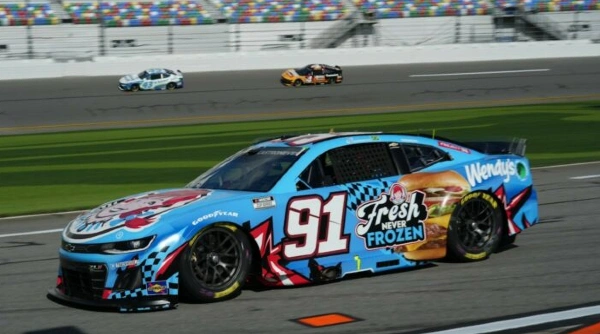The Open Exemption Provisional (OEP) rule, introduced for the 2025 NASCAR Cup Series season, has quickly become a contentious subject. Designed to offer a guaranteed spot to a high-profile driver from another motorsports discipline in events where the entry list exceeds the standard 40-car field, the rule is already generating significant debate ahead of the Daytona 500. While NASCAR’s goal of attracting new fans and increasing the sport’s global appeal is understandable, the reality of how the OEP is being implemented is leaving a sour taste in the mouths of many within the industry.
At first glance, the logic behind the OEP rule seems sound. By allowing a world-class driver from another series to compete, NASCAR is effectively bridging the gap between racing disciplines, potentially drawing in fans who might not have otherwise tuned in. This year, the rule is being used to grant four-time Indianapolis 500 champion Hélio Castroneves a guaranteed spot in the Daytona 500—a move that certainly adds star power to the race. However, the decision to reserve a spot for a non-NASCAR driver inherently comes at a cost, and that cost could be a driver who has dedicated their career to the sport.
Adding to the confusion, it has recently been suggested that veteran drivers like Jimmie Johnson and Martin Truex Jr. could have applied under the OEP rule had they known about it. However, this raises a significant issue: if the rule was designed to attract highly skilled drivers from different disciplines, how would it have applied to former NASCAR champions? Furthermore, Trackhouse Racing appeared to be the first to act on this rule, securing Castroneves’ spot before other teams and drivers had a clear understanding of how the process worked. This lack of transparency has only fueled frustration among veteran drivers and fans who believe the rule was not properly communicated or equitably applied.
Moreover, drivers utilizing the OEP are ineligible for championship points, prize money, or playoff eligibility from that event. While they can compete for the race win, the trophy, and All-Star Race eligibility, their participation does not impact the regular competitors’ standings or earnings. This stipulation further complicates the rule’s reception, as it offers limited incentives for teams to field such entries, potentially leading to questions about the rule’s overall benefit to the sport.
Veteran drivers and fans alike have voiced their frustrations. Denny Hamlin has been particularly outspoken, calling the rule a “desperate” attempt to inject outside star power into the series. Martin Truex Jr. has openly questioned the logic behind the OEP, struggling to understand why NASCAR would extend this opportunity to outsiders while seasoned veterans must fight for their place on the grid.
From a fan perspective, the reaction has been mixed. Some appreciate the effort to bring in new talent and broaden NASCAR’s audience. Others, however, see the OEP as a direct contradiction to the traditional merit-based system that defines the sport. The Daytona 500 is known as “The Great American Race” because it is a proving ground—drivers earn their spot through speed, skill, and strategy. Granting an automatic entry to an outsider disrupts that competitive balance and could alienate longtime fans who respect the tradition of having to race one’s way into the event.
Ultimately, while NASCAR’s intentions may be rooted in expanding its fan base, the execution of the OEP rule is creating more problems than solutions. There is a way to attract new viewers without sidelining the very drivers who have made the sport what it is today. If NASCAR wants to honor its legacy while also welcoming outside talent, it should consider revising the rule to ensure that past champions and longtime contributors are given priority before offering an automatic entry to a driver with no prior investment in the series.

